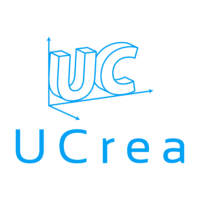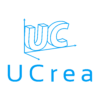Design guidelines for FDM 3D printing
Detailed mesh
Models must be uploaded as .STL (STereoLithography) files. Most modern computer-assisted design tools allow to save 3D models under this format.

An STL mesh is composed of triangular faces that are meshed together to form an approximation of the object you intend to print. That approximation can be way off if you don’t save or export your file with the right settings. Let’s look at different settings used to save a sphere as an *.STL file in SOLIDWORKS 2018.

Comparison of coarse and fine export settings


The 3D printer will print exactly what the *.STL mesh looks like so it’s up to you to save it the way you want it to come out of the machine! Increase your triangle face count to ensure the best quality. We recommend a deviation setting of 0.02mm and an angle setting of 10 degrees. Saving the *.STL mesh with a higher resolution than this will result in a file that is very large without any gains in print quality.
Recommended deviation setting: 0.02mm
Recommended angle setting: 10 degrees
Watertight mesh
Errors in the mesh can happen for a variety of reasons that can often be avoided by following proper design practices for the computer-assisted design suite you are using. Look online for resources. It’s important to ensure your mesh is watertight. A watertight mesh is the result of closed geometry that creates a solid volume. If we fill in our geometry with water, will liquid escape? It is best to verify the normal of the triangles and ensure that they all face outwards. An inverted normal can be read as a hole by the 3D printer. Verify that no internal geometry was left behind from a Boolean operation like a Cut, Subtraction or a Boss/Bass or Addition. This could cause problems.
If you find it hard to find problematic regions, tools like MeshLab and NetFabb can be useful.
Every border shared by more than 2 faces creates geometry that is non-manifold. Non-manifolds can be caused by self-intersecting surfaces, holes, inner faces or overlapping faces and separate objects. Find more information here.
When non-manifold geometry is present in a model, the 3D printer has difficulty reading the file properly.
Follow basic design guidelines

The nozzle used to create the models has a diameter, ”N”, of 0.4mm. That said, plastic expands as it is extruded because the pressure in the nozzle is greater than that outside. Further, the plastic is squished down on the previous layer, at a layer height, ”H”, typically of 0.2mm. For these reasons, the width of the extrusion is larger than the nozzle diameter. An extrusion multiplier, ”EM”, of 1.05 is used in the slicing process. The extrusion width, ”D”, is then of 0.42mm. Every feature of your 3D print is created by the nozzle as it moves in space, as such, its dimensions dictate what is possible to print… or not!
45-degrees rule

The most important rule to follow when designing for 3D printing is the 45-degree rule. Because plastic must be deposited on a previous layer, the model cannot contain unsupported overhangs beyond 45 degrees with respect to the vertical axis. The above image illustrates the design limitations. Avoid fillets on the bottom face.
Bridging



- Bridge minimal wall width supported: 0.42mm
- Bridge minimal thickness: 0.2mm [one layer height]

- Non-supported bridges are impossible to 3D print. The two extremities of a bridge must be connected to the wall of a model.
The 3D printing process used can extrude over empty spaces over short distances. This means that the 45-degree rule does not apply. The process is called a “bridge”. The surface finish quality of the inferior surface of a bridge is generally worse than other surfaces given it can sag due to a lack of support.

- Minimal supported wall thickness: 0.42 mm

- Minimal non-supported wall thickness: 0.84 mm
A supported wall is a wall connected on two sides or more. A non-supported wall is a wall connected at less than two sides. The walls of your model must be thicker than the minimal thickness suggested to make sure that your model prints successfully. Walls that are too thin are likely to deform and can break when removed from the plate.



- Minimum dimensions for debossed details:
- 0.42 mm large & 0.2 mm high

- Minimal dimensions for engraved details:
- 0.42 mm large & 0.2 mm high
- 0.84 mm for text that is legible
Keep these recommendations in mind if you want text or other geometry debossed of engraved on the side of your model.
Corners and edges





- Minimal radius of an exterior side in the horizontal plane: 0.5mm
FDM 3D printing involves thermoplastic being extruded through a small circular orifice. It is physically impossible to print out a perfect corner. More importantly, sudden changes in printing direction pushes the mechanical limits of the machine. A model with sharp corners is then more likely to detach from the bed and cause deformations during the printing process. This is even more important on the first layer. A model containing sharp corners on its base will likely fail. Please ensure you fillet the sides of your models before submitting a print. Don’t fillet the bottom face though! That will violate the 45-degrees rule.
Cylinders and holes





- Minimum external radius of a cylinder: 4.0mm

- Minimal interior radius of a hole: 3.2 mm
Small exterior cylinders or pillars can be difficult to print. They require slower prints and adequate cooling. As such, a minimal radius is necessary. As for holes, a hole that is too small will not print out properly. This is due to holes being extruded with a circular nozzle.
Orientation
Our team does its best to evaluate your product and orient it in the best direction according to your needs in dimensional accuracy and aesthetics. That said, it is preferable for you to keep in mind an orientation for the print while you design your part. It is then simpler to design around the design constraints presented above.
Visible layers
Generally, the effect of successive layers will be visible on the surface of a print. This is inherent to the 3D printing process. This is especially true for a surface with a small angle, say 10 degrees, relative to the horizontal. Connection surfaces and other important elements, such as holes, are reproduced with better dimensional accuracy when positioned in the horizontal plane.

